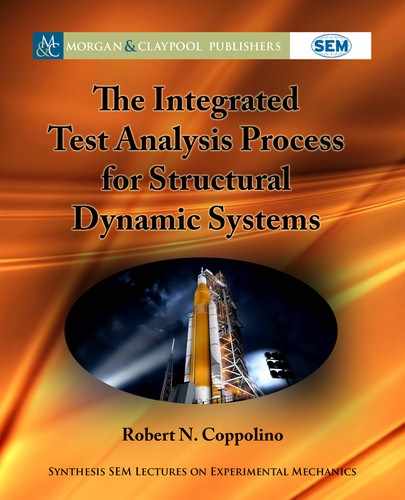2.1. PART 1: VARIATIONAL FOUNDATIONS OF MODERN STRUCTURAL DYNAMICS 11
is method was generally ignored for about three decades until its advantage in the ap-
proximate solution of infinite domain problems was recognized. Trefftz’s method has been in-
strumental in the development of the boundary element method.
2.1.8 AUTOMATED FORMULATIONS IN STRUCTURAL DYNAMICS
Among the methodologies that owe their foundations to Hamilton’s principle and the contri-
butions of Ritz, Galerkin, and Trefftz, two leading techniques are of prominence, namely (a) the
Finite Element Method and (b) systematic Matrix Structural Analysis. Discussion of these two
topics will be limited to linear systems.
2.1.9 THE FINITE ELEMENT METHOD
e Finite Element Method encompasses three mathematical disciplines, namely: (1) definition
of building blocks (finite elements), (2) assembly of structural system models, and (3) solution
of structural system equations. e third discipline is addressed by systematic Matrix Structural
Analysis.
Finite elements are generally derived as a specialized application of the Ritz method. e
displacement field associated with a single element is most generally described in terms of the
following family of shape functions:
u.x; y; z; t / D
N
h
X
nD1
‰
h;n
.x; y; z/ u
n
.t/ C
N
p
X
nD1
‰
p;n
.x; y; z/ q
n
.t/
or in matrix form,
f
u
g
D
Œ
‰
h
f
u
h
g
C
‰
p
˚
q
p
:
(2.9)
e “h” shape functions are referenced to physical displacements at specific grid points
on the element’s (boundary) surface and the “p” shapes are polynomial functions that have null
value along the element’s boundary surface. Substitution of the above shape family functions
(and their appropriate strain partial derivatives) into Hamilton’s principle (Equation 2.1) results
in positive semi-definite mass and stiffness matrices of the forms
Œ
M
element
D
M
pp
M
ph
M
hp
M
hh
element
;
Œ
K
element
D
K
pp
K
ph
K
hp
K
hh
element
: (2.10)
It should be emphasized here that definition of well-posed and accurate finite elements
depends upon expert selection of shape functions and numerical integration schemes. e most
commonly employed finite elements in commercial finite element codes is the “h” element which
does not include “p” generalized coordinates. e more general elements are often called “h-p”
elements.
..................Content has been hidden....................
You can't read the all page of ebook, please click here login for view all page.
